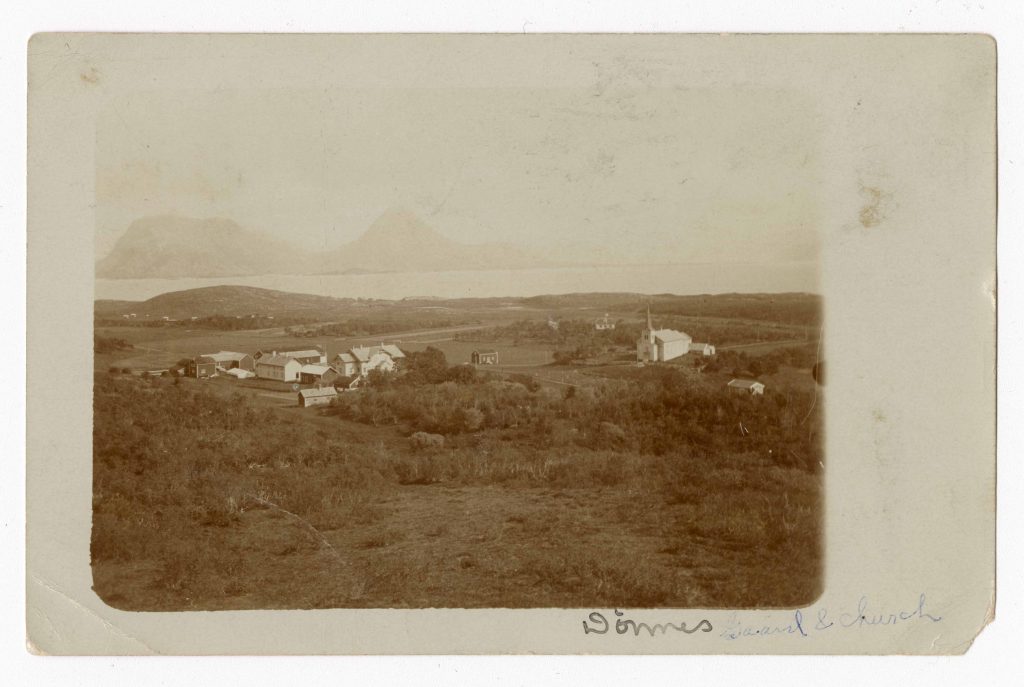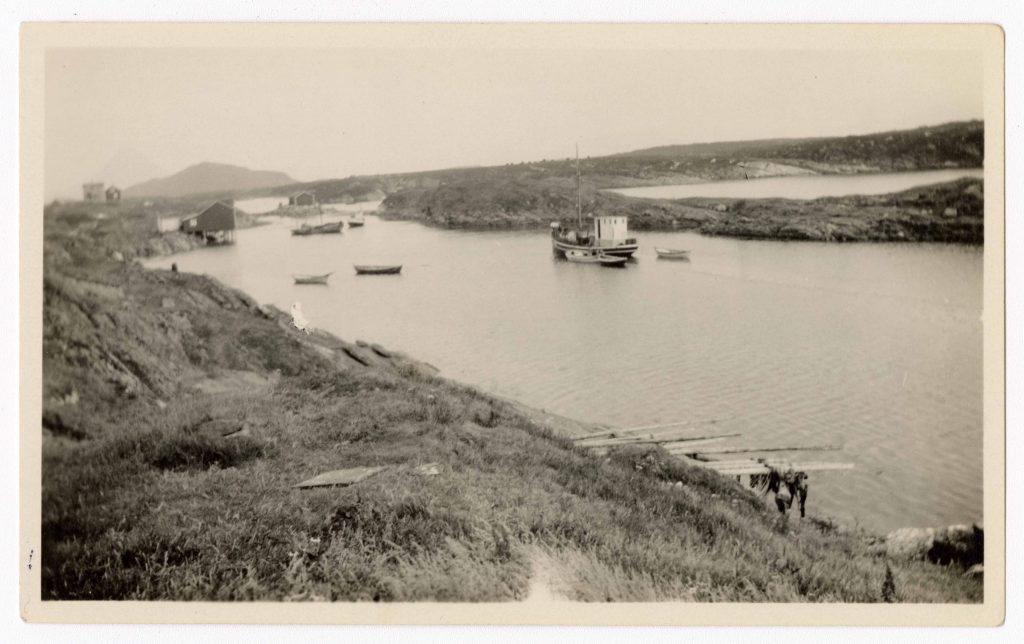Ole Rølvaag was born on April 22, 1876 to Peder Benjamin Jakobsen and Ellerine Pedersdatter Vaag. One of seven children living in the Northern region of Helgeland, Norway, Ole was immersed in a rich landscape that stimulated both his imagination and curiosity. Following the beliefs of many Norwegians at the time, the land was not merely inhabited by humans and animals, but also by creatures that were woven into the rich tapestry of the Earth. From Nils to fairies and trolls, Ole saw the world around him as both fascinating and fearsome. While there are only fragments from these early days of Ole’s life, his biography from later in life contains vivid recollections of his earliest memories. As a reader, it is important to recognize that these recollections may contain pieces of truth, desire, and fiction, and all paint a rich portrait of Ole’s life.

Memories of the Mountains
“I needed only to look through our east window to see the Seven Sister, seven jagged mountain peaks covering the whole skyline of the east. Some winters I feared these giant maidens. Trolls they were, trolls turned to stone. It would happen that when the course of the sun was low he could not get his eye above those huge rock piles, and not even on the clearest days at high noon could I see the sun. Back of the mountain wall I could feel his presence, ghost-like almost by the strange glow in the sky. Suppose the troll maidens took the sun? They must be cold, they needed warmth and light and things to play with? It could happen easily because the trolls were as mighty as God Himself, in some things even more powerful [. . .]
By and by there sprang up a great intimacy between me and the mountains. After I got so big that I could handle a boat alone we became good friends; the mountains were my landmarks for the beset fishing places in the ocean.”
– Ole Rølvaag, “Ole Edvart Rølvaag, A Biography”

As a child and preteen, Ole Rølvaag lived amongst the jagged cliffs off of Dønna Island, often referred to as the Seven Sisters. Common among Norwegian folklore, the mountains, like nearly every part of nature, had a supernatural connection. The history of the folklore of trolls in Norwegian culture is rich and ignited Ole’s young imagination. While his connection with the sea would deepen as he grew older, the mountains were one of his first connections to the power of nature and its centrality to Earth cycles. Seasons, weather, and hours could be understood if one merely looked upon the Seven Sisters. For Ole, the mountains of northern Norway beckoned him to imagine the ways in which nature and the supernatural were all interwoven into the landscape.
Memories of the Sea
“My kinship with the sea was closer still and much more real. I can predicate the same thing about the sea as the Israelites of old asserted about God: The Sea Was. To me the land had little consequence; it might as well not have been there at all. On the sea we depended for sustenance as the farmer on his crops. The sea was kind and beneficent, treacherous and terrible, all depending on his mood. Upon the sea I lived, most of the time; about it my dream-life was woven; for the sea was at one and the same time the most vital reality and the unfathomable mystery [. . .]
The sea was without end, it had no limits; it embraced the entire earth. Against its power man’s might was like a puff of breath in the hurricane that sweeps away whole cities. And fabulous it was in its riches. Hadn’t seven thousand barrels of herring been taken in one catch in the cove of Rölvaag? Yet at times it might be so [stingy] that we had to go hungry for weeks. When I listened to my big brother read Jules Verne my wonder and my awe for the sea grew, but also my love for it.”
– Ole Rølvaag, “Ole Edvart Rølvaag, A Biography”

Two piers below the Rolvaag home, Rolvaag Bay, Dønna, Norway, 1933 August 6 [p0584_00099]
Perhaps more vivid than Rølvaag’s memories of the mountains in Dønna were his memories of the sea. In his memoirs, the water was awesome both in its scope and nature. For Rølvaag, death seemed to be omnipresent and almost synonymous with the ocean. It was off the coast of Dønna that he saw his first capsized ship and the subsequent drowning of its two passengers. He noted how he watched from the shore as the wife of one of the fishermen onboard wailed from the shoreline, desperate for help but also aware that any attempts were futile. The water was both their necessary provider, as they were incredibly dependent on fish for their own sustenance, as well as the fishing industry for an income. As a child, Rølvaag remembered looking out at the water and being awestruck by its temperament. From still water one minute to eighteen-meter-high waves the next, Rølvaag had what he considered a healthy fear and respect of the ocean and water that literally and figuratively surrounded his early life.
Since the Rølvaag family was very dependent on the fishing industry, as were most people in Dønna and greater Norway at that time, when Ole came of age he joined his father and brothers in the trade. At the age of 14, Ole moved to Lofoten, an archipelago in Nordland, Norway in the Arctic Circle. There he formed many of his impressions of the magnificence of the sea, and for six years he worked in this region to support his family alongside his male relatives.
